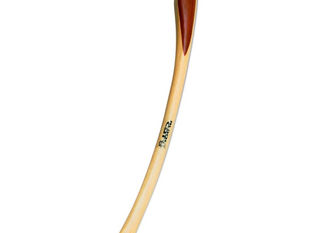
Decades-old trial-and-error had honed down the camp to the following shape. There was the big army tent, serving as dining-room, kitchen, office, and – in one of the corners – my father’s ‘bedroom’. That latter, let it be said immediately, was nothing more than a folding bed with a mosquito-net over it. Apart from that, the big tent – 3.5 m high – provided two essential services, needed for living and working in some comfort for a period of several months. In the first place, that was the luxury of a deep shade under the double roof of the tent. Secondly, there was boarding on the floor, which gave an even surface for tables and chairs. One could eat in comfort, watching the ever-changing scene of the river.

In the morning, my father used one of the dining-tables for downloading the data from the cameras and the sound-recorder, processing it, and archiving the results for future use.

Then there was the storage-tent, whose purpose was to declutter the big tent. Whatever was not immediately needed would go there: spare bedding for when visitors would come, spare clothing, tools and instruments, spare cables and hoses for pumping water from the river, the pump itself, an electric generator, a shrub-trimmer, a chain-saw, etc. Importantly, the sacks of oat flakes for the jackals would be kept there.
A third tent of the ordinary camping kind would be also kept in the storage-tent for pitching up when visitors came.
By 2025 and after quarter of a century of use, the big tent’s roof began to leak in several places. The question arose: should we replace it or try to patch it up?
BGArmyShop had ample quantities of that type of tent. What’s more, at a very reasonable price: EUR 300. The snag was the weight. The tent – minus poles, pegs, and ropes - came in a wooden chest. Separate from that was a 4 m central pole, and a canvas bag with 16 two-metre long wooden poles. The whole lot weighed 270 kilos. Courier fees added to the price another EUR 50.

After long deliberation, we decided it could be simpler to patch up the roof. Not an easy job – the canvas was thick. With a long needle and pliers, the biggest hole was patched up.


All in all, there were eight holes to patch. By the end of April, the job was done. The patches were not pretty to look at, but they would stop water dripping inside the tent and that was what mattered. Patched up, the main tent was carefully folded and machine-tied into tightly packed bundle. It was now ready for loading onto the factory van.
A smaller tent of the ordinary camping kind also needed some repair. That was done by simply sticking patches with a polyethylene-compatible adhesive. That tent was used by my father for the first days of pitching camp, when the main tent was not yet ready.


With the work on the tents over, we had to move onto other items. About that we’ll tell you in the next chapter. For a successful field research season lies on the other side of long, meticulous preparations.






